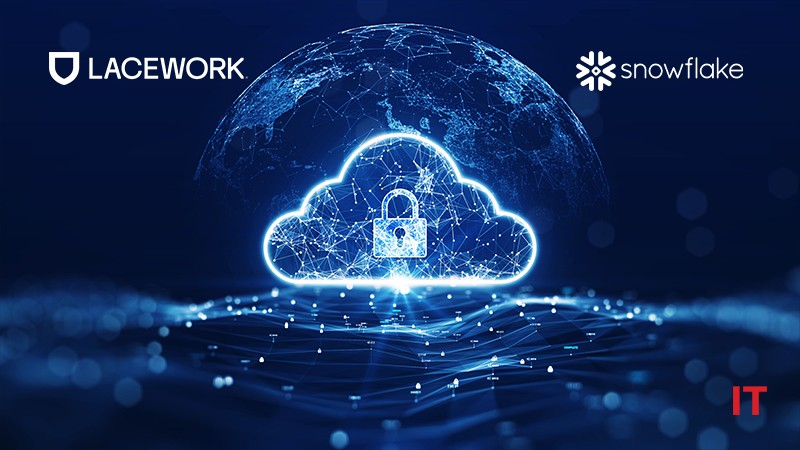Lacework, the data-driven cloud security company, and Snowflake, the Data Cloud company, announced an expanded partnership that advances the future of cloud infrastructure and further automates cloud security at scale. The extended partnership empowers security teams with direct access to their Lacework cloud security data through Snowflake’s secure data sharing for unified visibility and custom automation.
As generative AI becomes increasingly more sophisticated and democratized across industries, so does the frequency and magnitude of cybersecurity risks as businesses accelerate their development velocity and creation of cloud data. This new era of cloud security requires a fundamentally new approach, and Lacework’s platform is designed to handle the massive scale of data across an organization’s cloud environment — code, identities, containers, and multi-cloud infrastructure — leveraging Snowflake as its key platform partner. With Lacework’s security platform and Snowflake’s Data Cloud, customers can bring the value of cloud security data to the rest of the business, helping organizations holistically measure their security and compliance posture.
“Snowflake has been a committed platform partner as Lacework has scaled our business to support more than 900 customers — ranging from small, early-stage startups to some of the most sophisticated enterprises running in the cloud whose operations result in tremendous volume, velocity, and variety of security-relevant data,” said Ulfar Erlingsson, Chief Architect, Lacework. “Even across such a highly-skewed set of customers, for the last seven years Lacework has been able to operate timely and efficient data processing by leveraging the Snowflake Data Cloud. Our expanded partnership with Snowflake will enable us to better serve our joint customers at cloud scale, whether they require us to process only a trickle of security data or 10s of gigabytes per second.”
“Cybersecurity is a data problem at its core, and Snowflake’s extended partnership with Lacework makes it easy for joint customers to cover their critical cloud infrastructure with instant data sharing to their security data lake,” said Omer Singer, Head of Cybersecurity Strategy, Snowflake. “Among the many potential benefits of generative AI is the ability for enterprises to deploy new applications faster, which places even more emphasis on the need to have scalable solutions and infrastructure. The combination of Snowflake and Lacework will continue to help organizations scale their cloud businesses securely in this new era.”
Also Read: Axcient Receives 2023 Cloud Security Excellence Award
As a platform committed to providing customers with flexibility and choice in how they build out their technology infrastructure, Lacework works seamlessly with customers that choose to leverage Snowflake as their security data lake. Strategic customers including Sprinklr and Sigma Computing leverage Lacework and Snowflake together to supercharge their security operations with an end-to-end view of their cloud security data.
“As the cybersecurity threat landscape continues to evolve with the rise of emerging technologies, having all of our data in a place where we can correlate and analyze effectively becomes evermore critical for analysis and threat detection,” said Gerald Beuchelt, Chief Information Security Officer, Sprinklr. “Our global customers trust us to help manage their digital channels, and with Lacework and Snowflake, we gain much deeper insight into everything going on in our security cloud environment, enabling us to stay ahead of cyberthreats, automate processes, and conduct investigations with ease.”
Joint customers can also leverage Snowflake’s collaboration capabilities to tap into their data from Lacework, and securely unify this information with the rest of their data stored in the Data Cloud. By aligning security insights from Lacework with contextual data sets in Snowflake, joint customers can achieve better visibility for high-risk vulnerabilities, conduct more proactive threat hunting, enhance team efficiency, and more — without having to use APIs, data pipelines, or create copies of the data.
SOURCE: Prnewswire
































